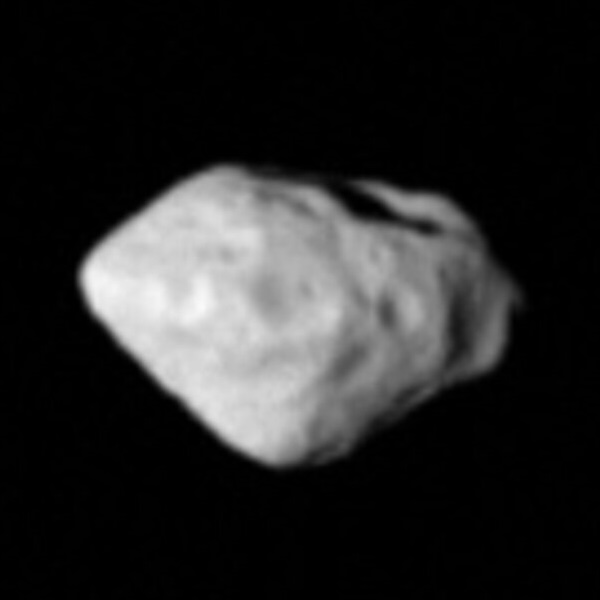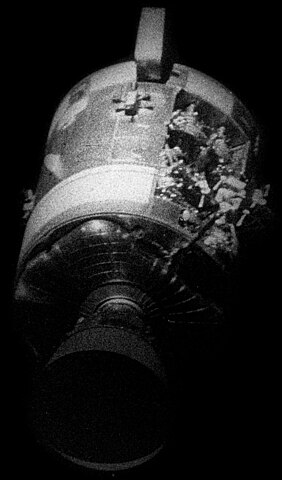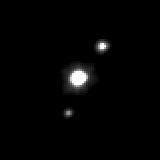1 day / second
0.5 AU
2867 Šteins
Asteroid
A small, diamond-shaped asteroid roughly 5km across that was visited by ESA's Rosetta spacecraft in 2008, revealing numerous impact craters including a large crater chain near its pole.
Key Facts
orbital regime | Asteroid Belt |
learn more | Wikipedia |
mass | 1.7984e+14 kg |
radius | 2.58 km |
hill radius | 940.977 km |
semi-major axis | 2.365 AU |
eccentricity | 0.146 |
inclination | 9.929º |
longitude of the ascending node | 55.333º |
argument of periapsis | 251.357º |
orbital period | 3.637 years |
discovery date | November 4, 1969 |
discovered by | Nikolai Chernykh at Crimean Astrophysical Observatory |
name origins | Named after Kārlis Šteins, a Latvian astronomer |
dimensions | 5.16 km in diameter |
albedo | 0.3 |
material composition | E-type asteroid, likely composed of enstatite chondrite material |
Spacecraft Visits
Rosetta
Flyby
Launched in 2004, visited in 2008
Rosetta performed a close flyby of asteroid Šteins on September 5, 2008, passing within 800 kilometers of the small diamond-shaped body while capturing detailed images and scientific measurements.










